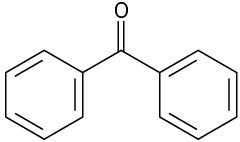16.3 Alkylation and Acylation of Aromatic Rings: The Friedel–Crafts Reaction
Among the most useful electrophilic aromatic substitution reactions in the laboratory is alkylation—the introduction of an alkyl group onto the benzene ring. Called the Friedel– Crafts reaction after its founders in 1877, Charles Friedel and James Crafts, the reaction is carried out by treating an aromatic compound with an alkyl chloride, RCl, in the presence of AlCl3 to generate a carbocation electrophile, R+. Aluminum chloride catalyzes the reaction by helping the alkyl halide to generate a carbocation in much the same way that FeBr3 catalyzes aromatic brominations by polarizing Br2 (Section 16.1). Loss of H+ then completes the reaction (Figure 16.8).
Figure 16.8 MECHANISM
Mechanism for the Friedel–Crafts alkylation reaction of benzene with 2- chloropropane to yield isopropylbenzene (cumene). The electrophile is a carbocation, generated by AlCl3-assisted dissociation of an alkyl halide.
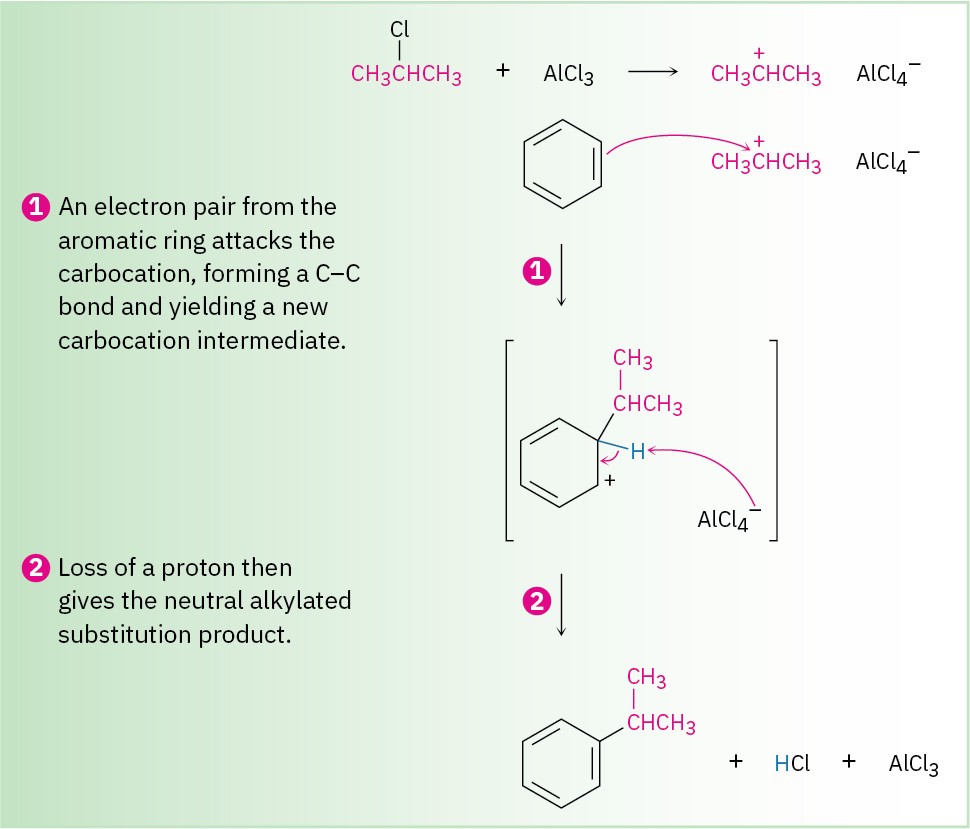
Despite its utility, the Friedel–Crafts alkylation has several limitations. For one thing, only alkyl halides can be used. Aromatic (aryl) halides and vinylic halides don’t react because aryl and vinylic carbocations are too high in energy to form under Friedel–Crafts conditions.

Another limitation is that Friedel–Crafts reactions don’t succeed on aromatic rings that are substituted either by a strongly electron-withdrawing group such as carbonyl (C=O) or by a basic amino group that can be protonated. We’ll see in the next section that the presence of a substituent group already on a ring can have a dramatic effect on that ring’s reactivity to further electrophilic substitution. Rings that contain any of the substituents listed in Figure
16.9 do not undergo Friedel–Crafts alkylation.

Figure 16.9 Limitations on the aromatic substrate in Friedel–Crafts reactions. No reaction occurs if the substrate has either an electron-withdrawing substituent or a basic amino group.
A third limitation to the Friedel–Crafts alkylation is that it’s often difficult to stop the reaction after a single substitution. Once the first alkyl group is on the ring, a second substitution reaction is facilitated for reasons we’ll discuss in the next section. Thus, we often observe polyalkylation. Reaction of benzene with 1 mol equivalent of 2-chloro-2- methylpropane, for example, yields p-di-tert-butylbenzene as the major product, along with small amounts of tert-butylbenzene and unreacted benzene. A high yield of mono- alkylation product is obtained only when a large excess of benzene is used.

A final limitation to the Friedel–Crafts reaction is that a skeletal rearrangement of the alkyl carbocation electrophile sometimes occurs during reaction, particularly when a primary alkyl halide is used. Treatment of benzene with 1-chlorobutane at 0 °C, for instance, gives an approximately 2 : 1 ratio of rearranged (sec-butyl) to unrearranged (butyl) products.
The carbocation rearrangements that accompany Friedel–Crafts reactions are like those that accompany electrophilic additions to alkenes (Section 7.11) and occur either by hydride shift or alkyl shift. For example, the relatively unstable primary butyl carbocation
produced by reaction of 1-chlorobutane with AlCl3 rearranges to the more stable secondary butyl carbocation by the shift of a hydrogen atom and its electron pair (a hydride ion, H:–) from C2 to C1. Similarly, alkylation of benzene with 1-chloro-2,2-dimethylpropane yields (1,1-dimethylpropyl)benzene. The initially formed primary carbocation rearranges to a tertiary carbocation by shift of a methyl group and its electron pair from C2 to C1.
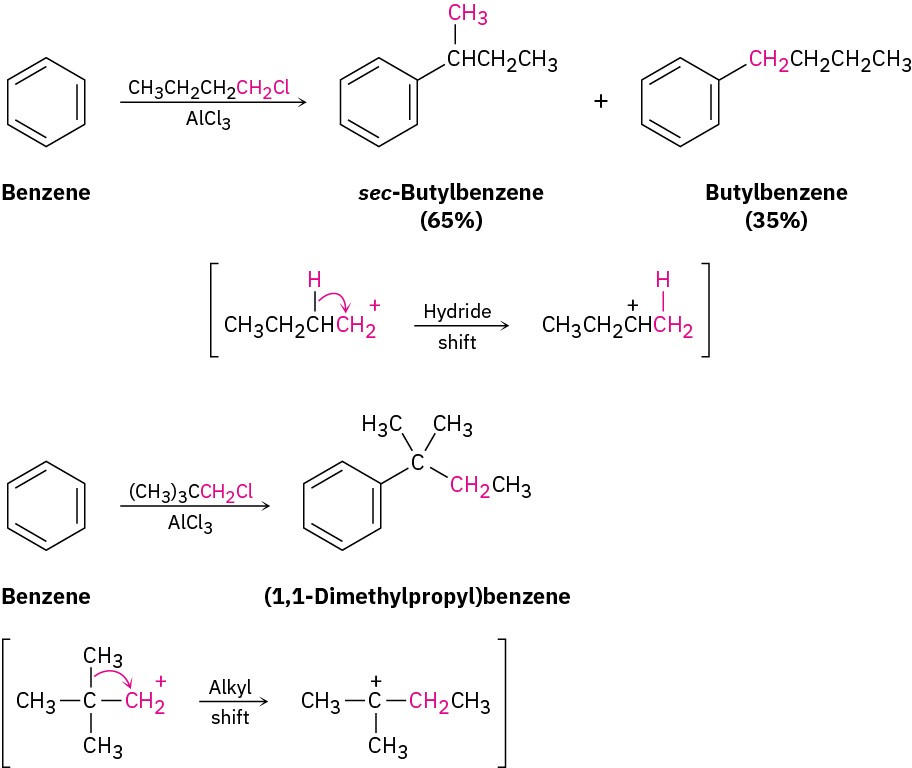
Just as an aromatic ring is alkylated by reaction with an alkyl chloride, it is acylated by reaction with a carboxylic acid chloride, RCOCl, in the presence of AlCl3. That is, an acyl group (–COR; pronounced a-sil) is substituted onto the aromatic ring. For example, reaction of benzene with acetyl chloride yields the ketone acetophenone.

The mechanism of Friedel–Crafts acylation is similar to that of Friedel–Crafts alkylation, and the same limitations on the aromatic substrate noted previously in Figure 16.9 for alkylation also apply to acylation. The reactive electrophile is a resonance-stabilized acyl cation, generated by reaction between the acyl chloride and AlCl3 (Figure 16.10). As the resonance structures in the figure indicate, an acyl cation is stabilized by interaction of the vacant orbital on carbon with lone-pair electrons on the neighboring oxygen. Because of this stabilization, no carbocation rearrangement occurs during acylation.
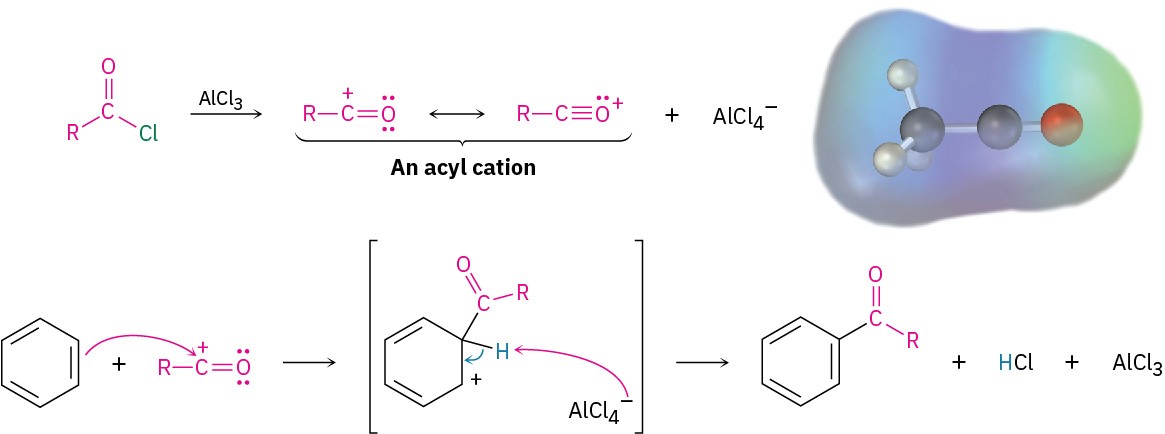
Figure 16.10 Mechanism of the Friedel–Crafts acylation reaction. The electrophile is a resonance-stabilized acyl cation, whose electrostatic potential map indicates that carbon is the most positive atom.
Unlike the multiple substitutions that often occur in Friedel–Crafts alkylations, acylations never occur more than once on a ring because the product acylbenzene is less reactive than the nonacylated starting material. We’ll account for this reactivity difference in the next section.
Aromatic alkylations occur in numerous biological pathways, although there is of course no AlCl3 present in living systems to catalyze the reaction. Instead, the carbocation electrophile is typically formed by dissociation of an organodiphosphate, as we saw in Section 11.6. The dissociation is usually assisted by complexation to a divalent metal cation such as Mg2+, just as dissociation of an alkyl chloride is assisted by AlCl3.
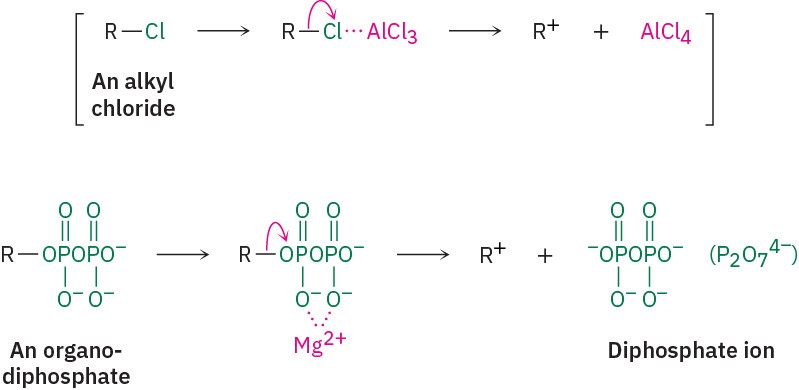
An example of a biological Friedel–Crafts reaction occurs during the biosynthesis of phylloquinone, or vitamin K1, the human blood-clotting factor. Phylloquinone is formed by reaction of 1,4-dihydroxynaphthoic acid with phytyl diphosphate. Phytyl diphosphate first dissociates to a resonance-stabilized allylic carbocation, which then substitutes onto the aromatic ring in the typical way. Several further transformations lead to phylloquinone (Figure 16.11).
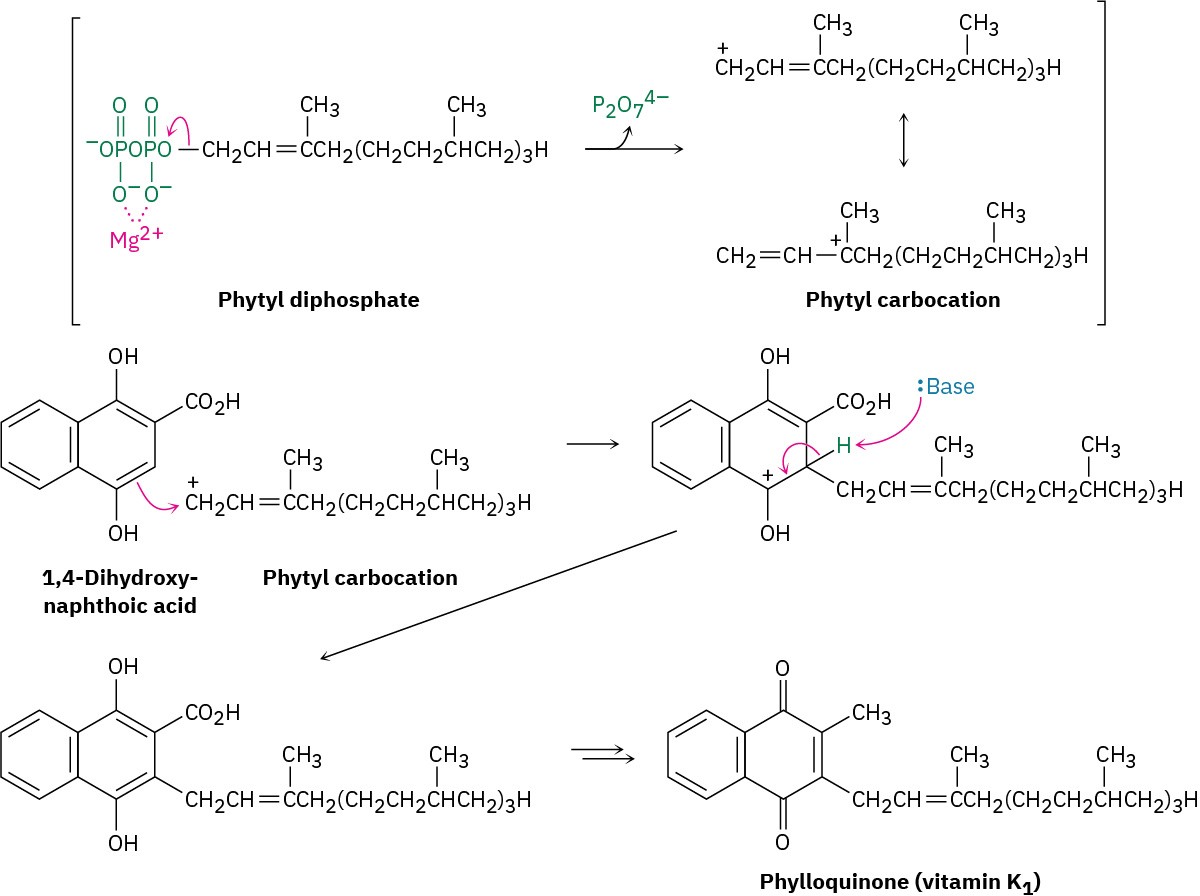
Figure 16.11 Biosynthesis of phylloquinone (vitamin K1) from 1,4- dihydroxynaphthoic acid. The key step that joins the 20-carbon phytyl side chain to the aromatic ring is a Friedel–Crafts-like electrophilic substitution reaction with a diphosphate ion as the leaving group.
Worked Example 16.1Predicting the Product of a Carbocation RearrangementThe Friedel–Crafts reaction of benzene with 2-chloro-3-methylbutane in the presence of AlCl3 occurs with a carbocation rearrangement. What is the structure of the product?StrategyA Friedel–Crafts reaction involves initial formation of a carbocation, which can rearrange by either a hydride shift or an alkyl shift to give a more stable carbocation. Draw the initial carbocation, assess its stability, and see if the shift of a hydride ion or an alkyl group from a neighboring carbon will result in increased stability. In the present instance, the initial carbocation is a secondary one that can rearrange to a more stable tertiary one by a hydride shift.

Use this more stable tertiary carbocation to complete the Friedel–Crafts reaction.Solution

Problem 16-5
Which of the following alkyl halides would you expect to undergo Friedel–Crafts reaction with rearrangement and which without? Explain.
(a) CH3CH2Cl(b) CH3CH2CH(Cl)CH3(c) CH3CH2CH2Cl(d) (CH3)3CCH2Cl
(e) Chlorocyclohexane Problem 16-6
What is the major monosubstitution product from the Friedel–Crafts reaction of benzene with 1-chloro-2-methylpropane in the presence of AlCl3?
Problem 16-7
Identify the carboxylic acid chloride that might be used in a Friedel–Crafts acylation reaction to prepare each of the following acylbenzenes:
(a)
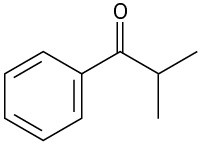
(b)
